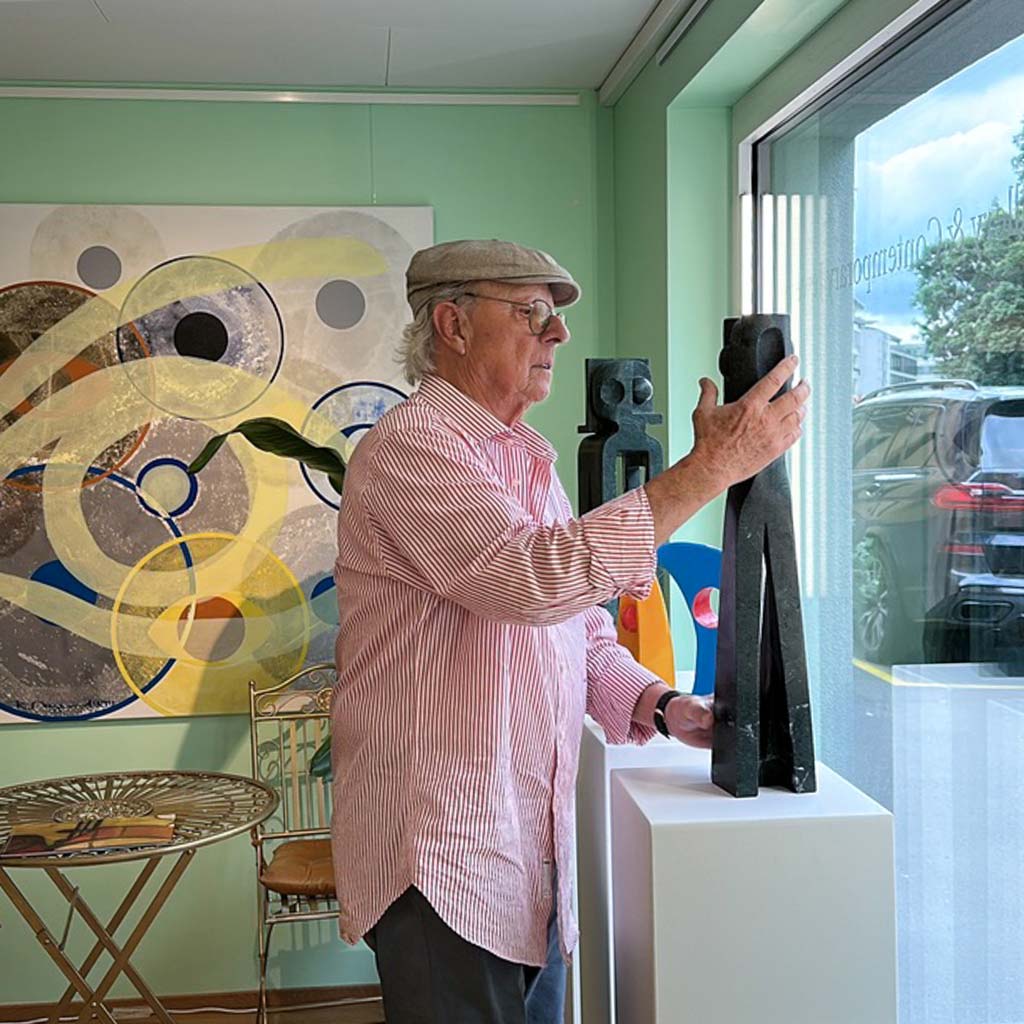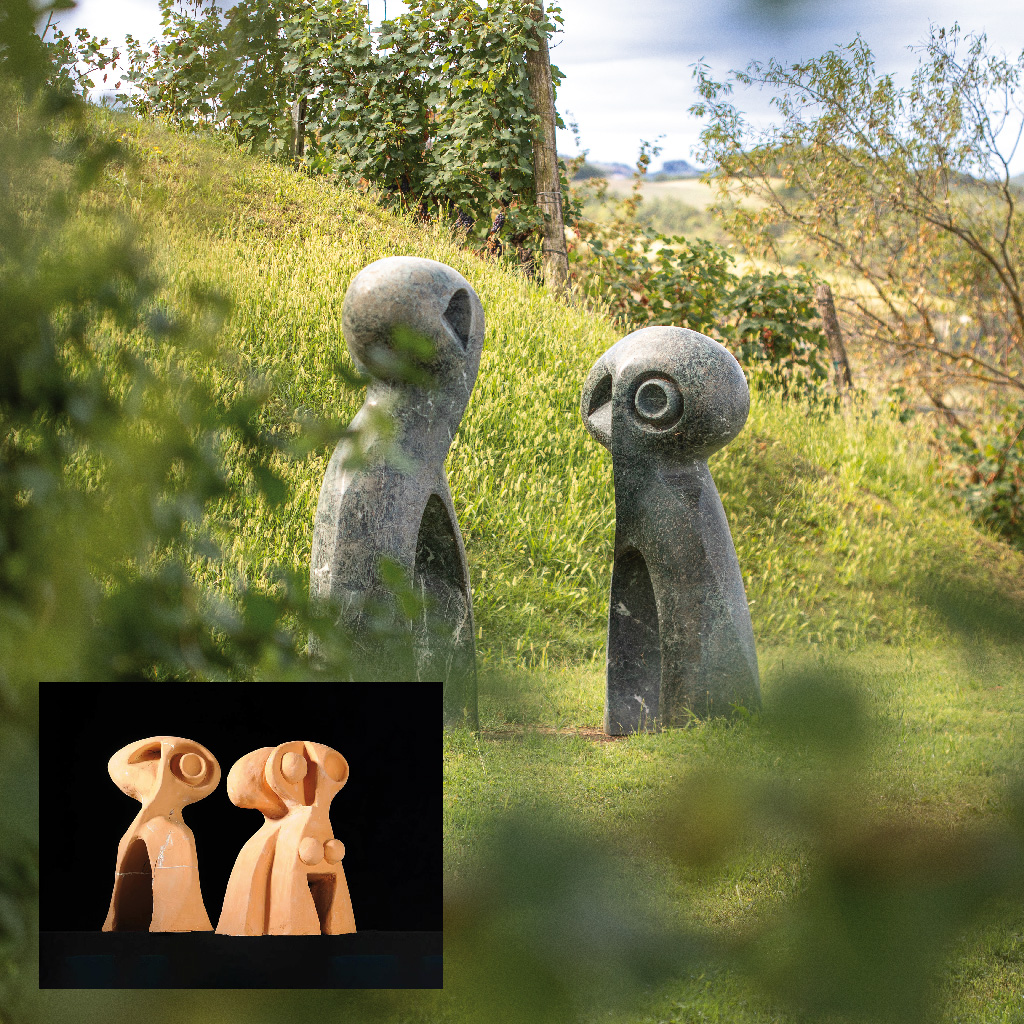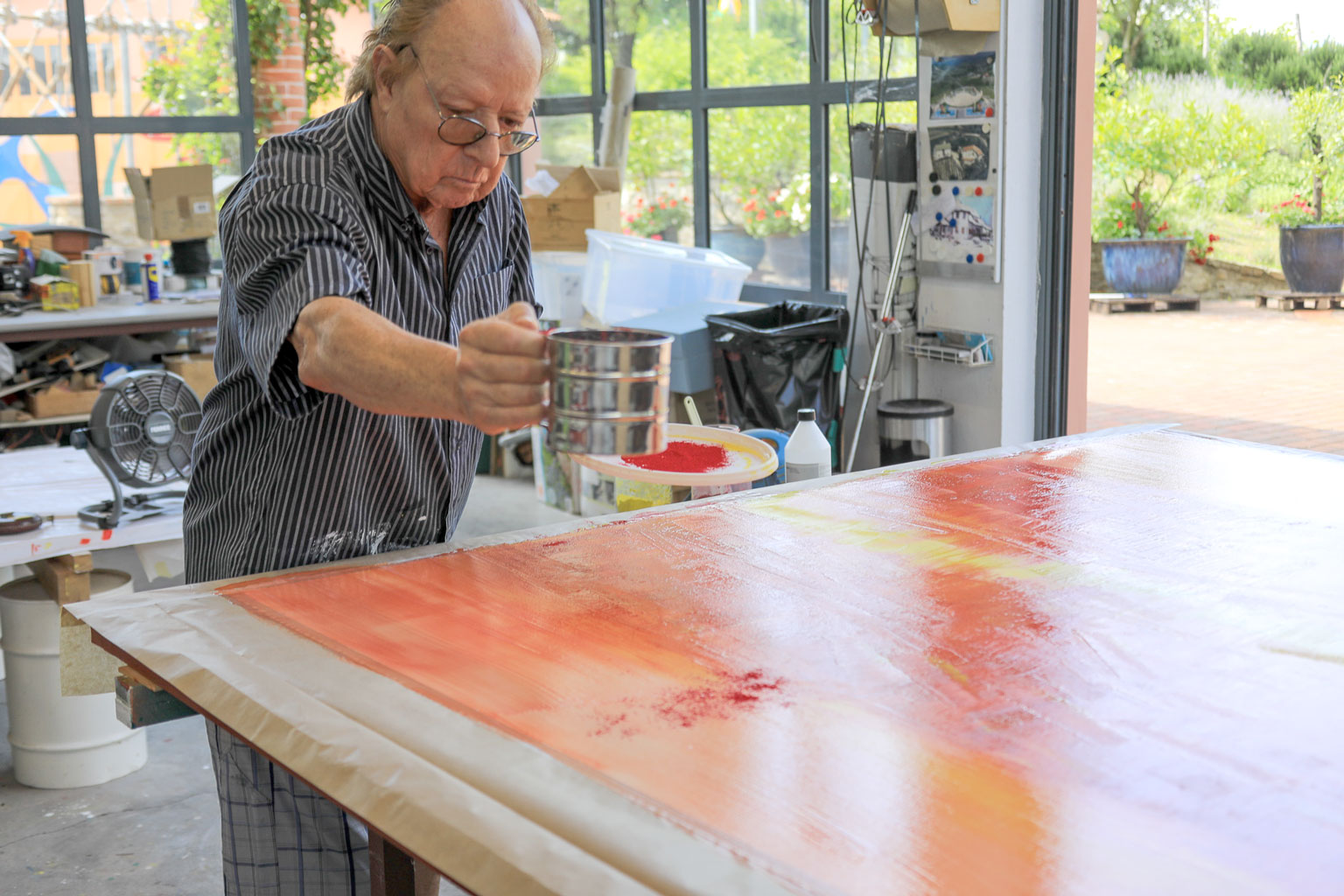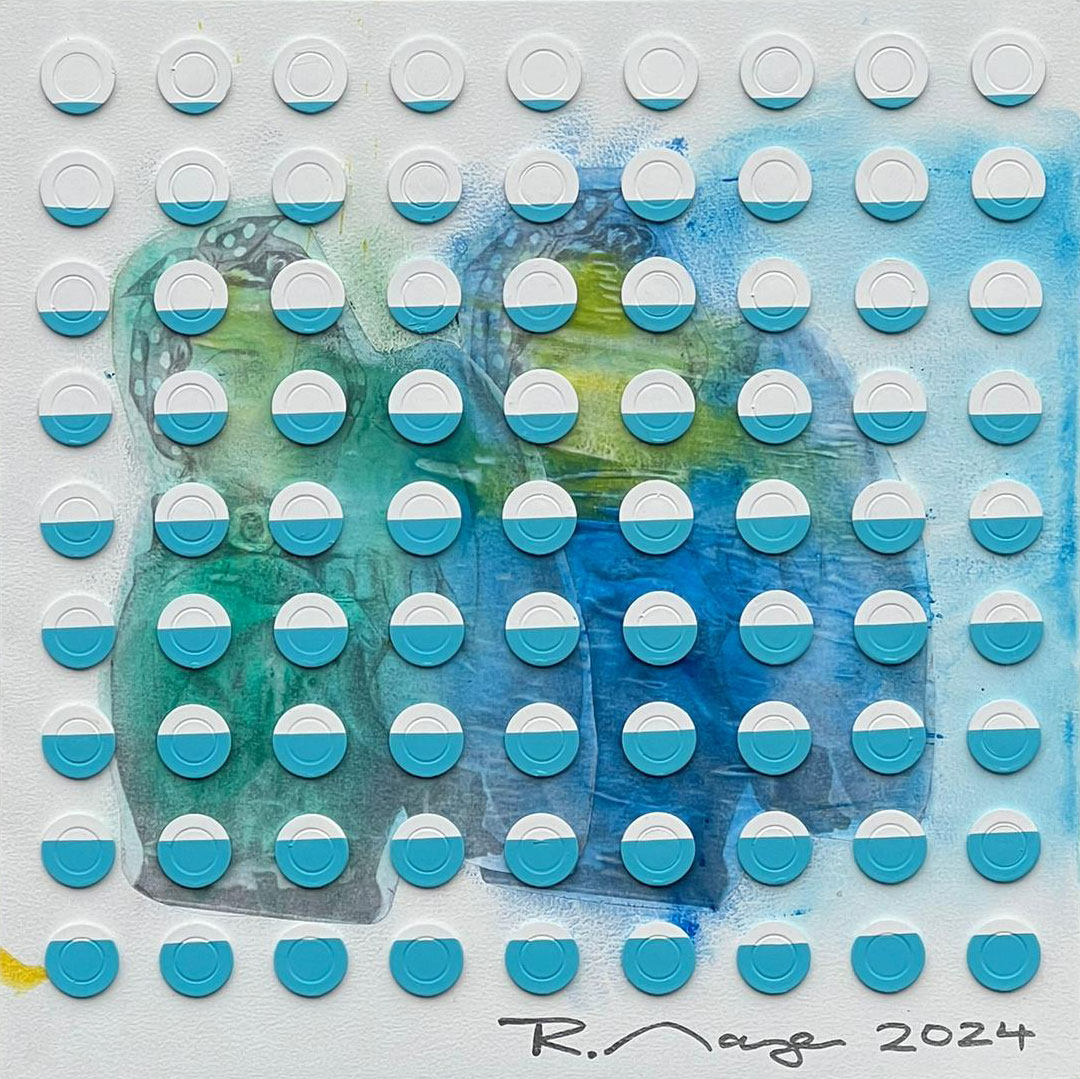How did an artist who remained in the shadows for almost 50 years emerge, in the space of just a few exhibitions, as a leading figure in Swiss and European contemporary art?
The answer lies in one name: René Mayer.
This Swiss artist, born in 1956, produced for decades without ever exhibiting. No gallery, no website, no communication. Just a silent studio, a continuous practice, a personal demand. Until, in 2023, he decided to open his world to the public. Since then, each exhibition has revealed a different aspect of his abundant body of work, at the crossroads of abstraction, sculpture and existential reflection.
What René Mayer offers cannot be summed up as an aesthetic: it is a language.
A language in which forms whisper, colours vibrate, and each piece seems to come from a world that is both interior and universal. Through a series of landmark exhibitions in Switzerland, Italy and Turkey, René Mayer has reinvented contemporary art through his unique vision, which is at once intuitive, structured, radical and profoundly human.
A late but dazzling entry onto the art scene
René Mayer did not follow the classic path of contemporary artists.
He didn’t come out of a fashionable art school, he didn’t seek institutional recognition, he didn’t attend residencies or art fairs. For almost half a century, he worked alone, in the privacy of his studio, exploring his own personal paths, far from the trends.
It wasn’t until 2023 that he agreed to exhibit publicly for the first time. What struck critics and visitors at the time was not just the formal quality of his works, but their coherence, depth and maturity. We discovered an artist whose vision was already fully formed, whose pictorial and sculptural cycles followed one another with an almost musical logic.
Since then, each exhibition has confirmed this singularity.
René Mayer does not belong to any school, nor does he allow himself to be confined by any style. He develops his own artistic grammar, between allusive figuration and gestural abstraction, between raw material and delicate symbolism.
A series of landmark exhibitions: from Piedmont to Central Switzerland
1 “Schleichende Veränderung” – Bubbio, Italy (summer 2024)
This is perhaps the most emblematic exhibition to date. Presented at the SAB – Spazio Arte Bubbio, and curated by Luca Beatrice, President of Rome’s Quadriennale, “Schleichende Veränderung”(Stealthy Change) revealed 30 powerful and meditative recent abstract works to the Italian public.
The display, sober and immersive, gave way to the slow inner transformation that these paintings provoke. The title itself evokes René Mayer’s central theme: everything changes, slowly, imperceptibly – to the point of irreversibility.
The exhibition was hailed by Italian critics as a “belated but momentous revelation”. The artist, invited to talk about his work, remained true to himself: discreet, precise, deeply committed to his process.
2. Solidarity exhibition – Galerie Fresa y Chocolate, Vevey (December 2024)
At the end of 2024, René Mayer took part in a group exhibition in aid of the NGO What Water, which finances water infrastructure in Africa. Curated byAlicia Pestalozzi, this exhibition has a strong humanitarian dimension.
25% of sales are donated to the NGO.
René Mayer is presenting several original works, including some from the Finitude series, in a more intimate, narrative version. The artist’s humanist commitment, rarely expressed verbally, shines through in the choice of works and in their silent power.
3. Istanbul – Intercultural Encounter (2025)
The following year, René Mayer was invited to exhibit in Turkey, as part of a cultural dialogue between Swiss and Turkish artists. In Istanbul, his works resonated with the city’s thousand-year-old history, its rich symbolism and its contemporary energy.
For the first time, more graphic works on paper are on show alongside granite sculptures and acrylic paintings. The public will be able to discover another side of Mayer: that of an artist traversed by civilisations, but faithful to an inner quest.
4. “What the eye cannot see” – Galerie Zimmermannhaus, Baar (March 2025)
In March 2025, the exhibition “Ce que l’œil ne voit pas” marked René Mayer’s entry into a leading Swiss gallery. At the Zimmermannhaus in Baar, he exhibited works from the Augen(Eyes) series, alongside stylised sculptures in black stone.
The exhibition questions the gaze, wilful blindness and the invisible truth.
One of the major pieces, a sculpture of a head with a single eye on the back of its neck, quickly became emblematic of his work. The German-speaking Swiss public discovered an artist who was both demanding and accessible.
5. Hergiswil – Matter as language (May 2025)
More recently, René Mayer has been exhibiting in Hergiswil, on the shores of Lake Lucerne. The space, bathed in light, lends itself ideally to the exploration of matter as a vector of emotion.
The exhibition features sculptures in pumice, granite and marble from the Marble & Granite cycle, all derived from initial models in terracotta. These works reflect the tension between the organic and the mineral, between immediate gesture and eternal solidity.
A body of work that crosses materials, but remains unified
What makes René Mayer’s exhibitions so coherent, despite the diversity of media – canvas, paper, terracotta, stone, installation – is the consistency of his approach. Each work is an attempt to capture the invisible, to materialise an intuition, a feeling, a silence.
His pictorial series(Mutation furtive, Finitude, Terre en émoi, Protégé ou enfermé?) engage in a non-hierarchical dialogue with his sculptures(Viva Viva, Marbre & Granit, Augen).
They are never decorative, but always essential.
A humanist, free and singular vision
René Mayer never explains his works. He rejects unambiguous interpretations. What he seeks is to provoke a resonance in the viewer. A disturbance. A question. An emotion.
His approach, profoundly free, draws on a variety of influences:
-
traditional African art (for its symbolic power),
-
Minimalism (for its formal sobriety),
-
gestural painting (for its spontaneity),
-
and classical sculpture (for its quest for balance).
But in the end, he develops his own language. A unique vision, where each form is chosen, each void is inhabited, each material has a reason for being.
Conclusion: a rare artist, a must-see
René Mayer reinvents contemporary art through his unique vision, not by breaking with tradition, but by inscribing a singular voice.
His exhibitions are not social events: they are experiments in concentration, presence and slowness. It takes time to get into his work. But once you’re in, you’ll never forget it.
Today, as his name begins to circulate in contemporary art circles, René Mayer continues to work with the same exacting standards.
With little media coverage and a low profile on the networks, he is building a body of work that is outside the codes, but at the heart of our times.





